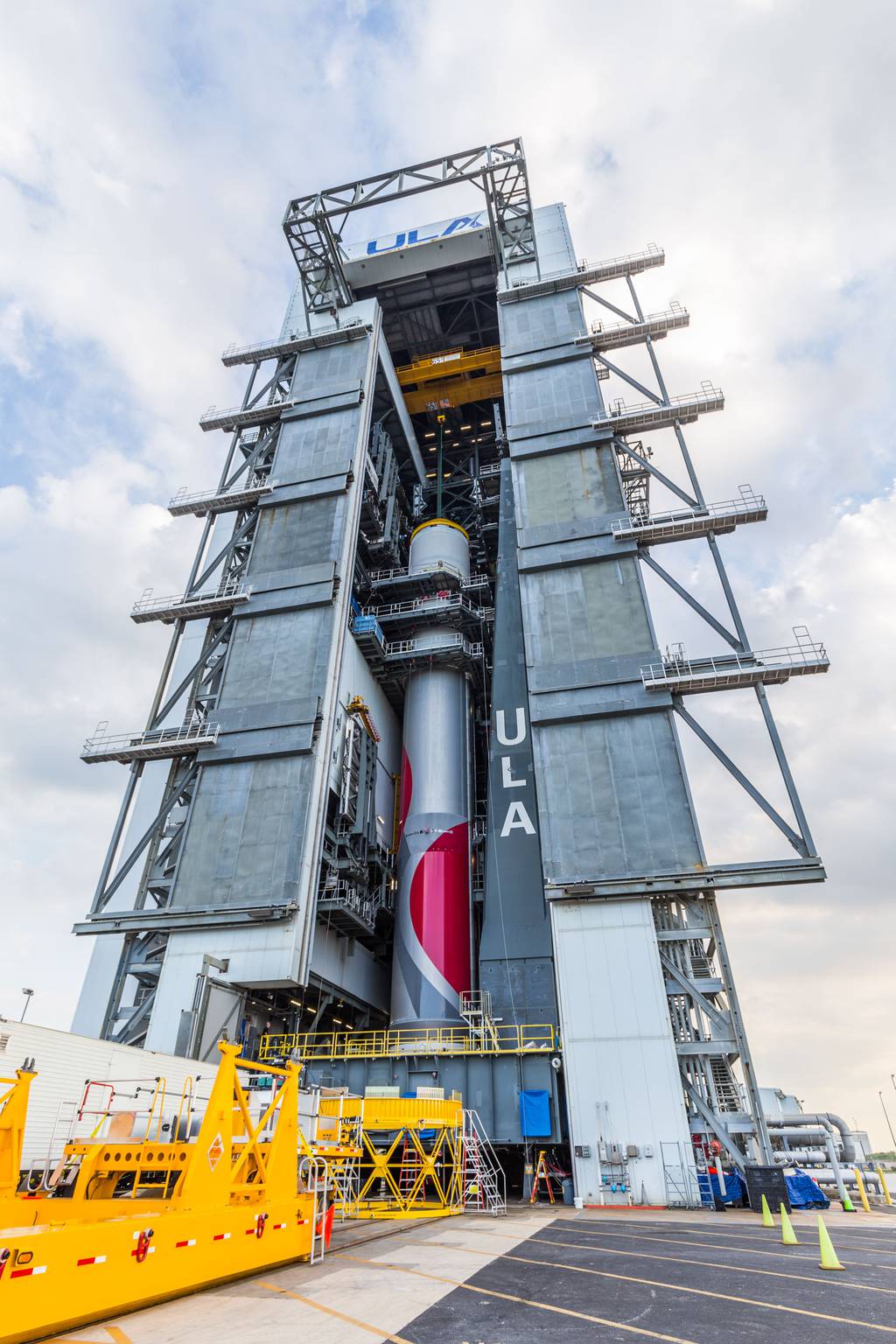WASHINGTON — A testing setback will delay the first flight of United Launch Alliance’s Vulcan rocket to the end of the year, the company’s CEO told reporters.
Denver-based ULA expected the launch to occur in early May, but recovery from a March testing anomaly ha taken longer than anticipated. CEO Tory Bruno told reporters during a July 13 media briefing ULA has identified the root cause and is in the process of incorporating a fix, but the rocket won’t fly before the end of this year.
“The corrective action is low risk, straightforward,” he said, adding that the production is moving smoothly at the company’s factory. “That will allow us to fly before the end of the year.”
ULA, along with Elon Musk’s SpaceX, is one of two companies with rockets cleared to fly national security space missions for the U.S. Defense Department and the intelligence community. The company is in the process of replacing its legacy Atlas V and Delta IV vehicles — longtime workhorse rockets for the U.S. government — with the more powerful Vulcan.
The company previously expected Vulcan to begin flying national security missions in 2022, following certification by the Space Force that the rocket is cleared to fly high-value missions. Repeated delays — many involving the rocket’s BE-4 engine built by Blue Origin — have slowed the certification process, which includes a requirement that Vulcan fly two missions.
The most recent schedule setback, Bruno said, means Vulcan won’t be available to fly its first national security mission until mid-2024 — and that’s if all goes smoothly for the rocket over the next year. Prior to the test anomaly, the company was slated to launch the Space Force’s USSF-106 mission at the end of this year, which will feature a classified program as well as an experimental navigation satellite dubbed Navigation Technology Satellite-3, or NTS-3.
Bruno said the plan to host USSF-106 on a Vulcan rocket had not changed. The Space Force did not immediately confirm whether ULA’s vehicle would still fly the mission or provide details on the implications for the programs supported by USSF-106.
That includes NTS-3 – a key demonstration for the Space Force as it considers ways to augment its GPS satellites with new capabilities. The L3Harris-built spacecraft is meant to showcase technologies like steerable beams to provide regional coverage, a reprogrammable payload that can receive upgrades in orbit and protections against signal jamming.
Expanding portfolio
For ULA, the Vulcan flight delay comes as the company is expanding from a manifest dominated by national security and NASA missions to one that is split evenly between government and commercial launches.
By the end of 2025, ULA expects to be flying missions every two weeks. Along with its share of national security space launches, the company has won contracts in the last two years from Amazon to fly 47 launches for its Project Kuiper program, a constellation of more than 3,000 satellites that will expand broadband access.
Bruno said the company’s portfolio is “much more balanced” than in years past. ULA’s launch rate has quadrupled, he said, and the new business has helped it fund upgrades to its launch infrastructure and manufacturing facilities.
“It’s allowed us to be lower cost and more efficient because of these capital improvements and how we build and fly the rocket,” he said. “It is no small trick to quadruple the rate at which you fly rockets. So, we have been managing massive construction projects.”
Courtney Albon is C4ISRNET’s space and emerging technology reporter. She has covered the U.S. military since 2012, with a focus on the Air Force and Space Force. She has reported on some of the Defense Department’s most significant acquisition, budget and policy challenges.








